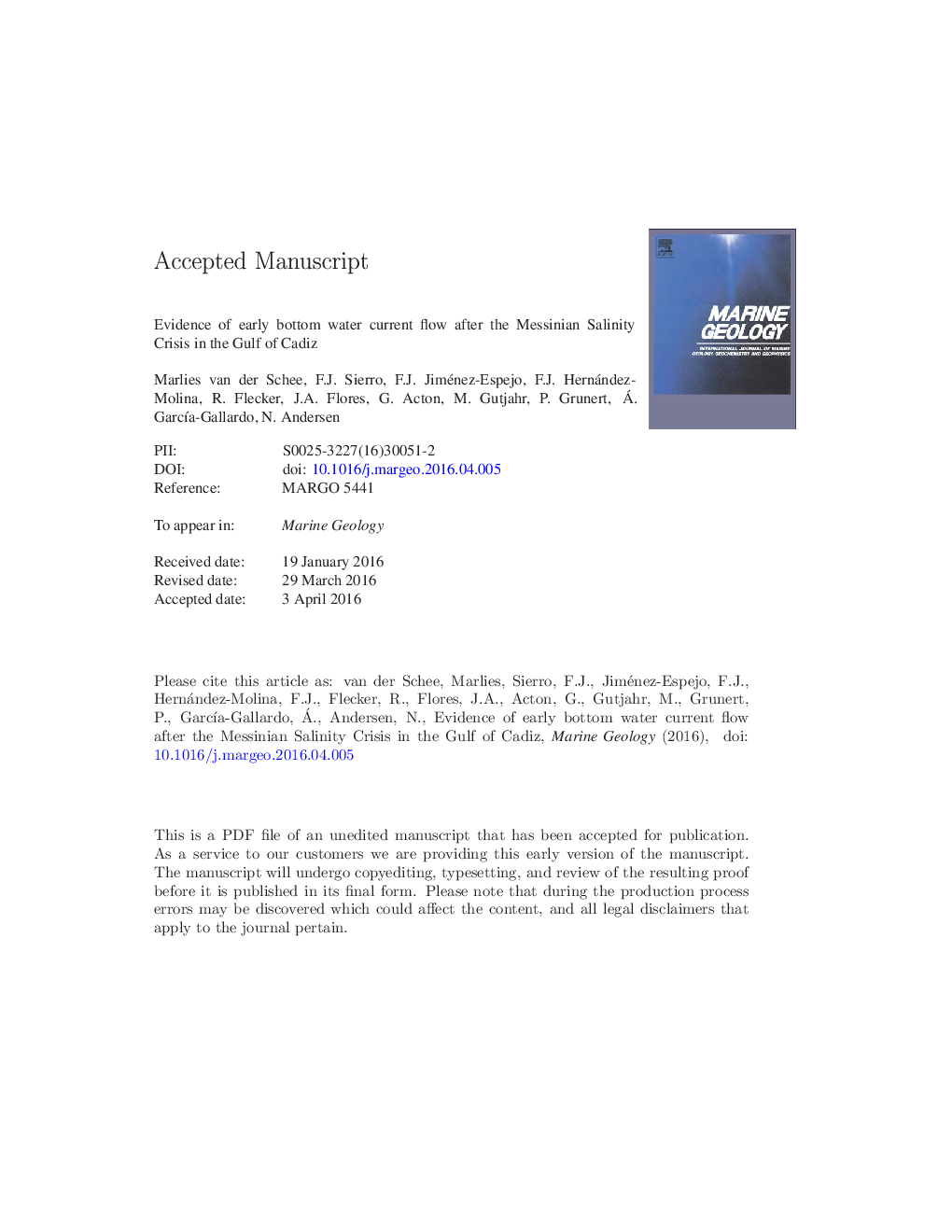| کد مقاله | کد نشریه | سال انتشار | مقاله انگلیسی | نسخه تمام متن |
|---|---|---|---|---|
| 6441323 | 1639072 | 2016 | 59 صفحه PDF | دانلود رایگان |
عنوان انگلیسی مقاله ISI
Evidence of early bottom water current flow after the Messinian Salinity Crisis in the Gulf of Cadiz
ترجمه فارسی عنوان
شواهد مبنی بر جریان اولیه جریان آب پایین پس از بحران شورشی مسیحین در خلیج فارس
دانلود مقاله + سفارش ترجمه
دانلود مقاله ISI انگلیسی
رایگان برای ایرانیان
کلمات کلیدی
موضوعات مرتبط
مهندسی و علوم پایه
علوم زمین و سیارات
ژئوشیمی و پترولوژی
چکیده انگلیسی
Integrated Ocean Drilling Program (IODP) Expedition 339 cored multiple sites in the Gulf of Cadiz in order to study contourite deposition resulting from Mediterranean Outflow water (MOW). One Hole, U1387C, was cored to a depth of 865.85 m below seafloor (mbsf) with the goal of recovering the latest Miocene to Pliocene transition in order to evaluate the history of MOW immediately after the end of the Messinian Salinity Crisis. To understand this history, an accurate age model for the succession is needed, but is challenging to construct, because the Miocene-Pliocene boundary is not marked by a clear biostratigraphic event in the Atlantic and coring gaps occur within the recovered stratigraphic record. These limitations are overcome by combining a variety of chronostratigraphic datasets to construct an age-model that fits the currently available age indicators and demonstrates that coring in Hole U1387C did indeed recover the Miocene-Pliocene boundary at about 826 mbsf. This boundary is associated with a distinct and abrupt change in depositional environment. During the latest Messinian, hemipelagic sediments exhibiting precession-induced climate variability were deposited. These are overlain by Pliocene sediments deposited at a much higher sedimentation rate, with much higher and more variable XRF core scanning Zr/Al ratios than the underlying sediment, and that show evidence of winnowing, particle sorting and increasing grain size, which we interpret to be related to the increasing flow of MOW. Pliocene sedimentary cyclicity is clearly visible in both the benthic δ18O record and the Zr/Al data and is probably also precessionally controlled. Two contouritic bigradational sandy-beds are revealed above the third sedimentary cycle of the Pliocene. On the basis of these results, we conclude that sedimentation associated with weak Mediterranean-Atlantic exchange, began in the Gulf of Cadiz virtually at or shortly after the Miocene-Pliocene boundary.
ناشر
Database: Elsevier - ScienceDirect (ساینس دایرکت)
Journal: Marine Geology - Volume 380, 1 October 2016, Pages 315-329
Journal: Marine Geology - Volume 380, 1 October 2016, Pages 315-329
نویسندگان
Marlies van der Schee, F.J. Sierro, F.J. Jiménez-Espejo, F.J. Hernández-Molina, R. Flecker, J.A. Flores, G. Acton, M. Gutjahr, P. Grunert, Á. GarcÃa-Gallardo, N. Andersen,
